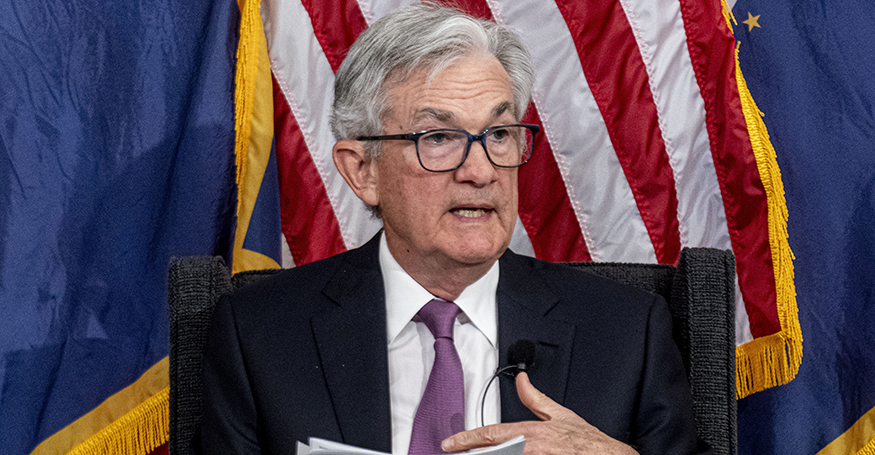Introduction:
In recent times Gold Trade, the gold market has witnessed fluctuations, with the precious metal’s value hovering near its weakest levels in three months. This downward pressure can be attributed to hawkish statements made by the US Federal Reserve, indicating a potential tightening of monetary policy. While the Fed chose to maintain interest rates unchanged, their latest report to Congress highlights persistent inflationary pressures in key sectors of the US services industry. Market expectations are now priced for an imminent 25 basis point rate hike in July, followed by a halt in further increases. Amidst these developments, investors eagerly await insights from forthcoming appearances by Fed officials. Furthermore, central banks across the globe are also taking action, as seen with the European Central Bank’s recent rate hike and an indication of further increases, along with the Bank of England’s planned upward adjustment this week.
The Impact of US Federal Reserve Hawkishness on Gold Trade Signals
The gold market found itself under significant pressure as hawkish statements emanating from the US Federal Reserve reverberated across the financial landscape. Faced with gold prices stubbornly lingering below the $1,960 per ounce threshold, investors swiftly shifted their focus toward the Fed’s pronouncements on monetary tightening. In its latest report submitted to Congress, the central bank voiced its concerns regarding the persistently high inflation levels prevailing in vital sectors of the US services industry. These concerns were accompanied by a somber observation that these inflationary pressures displayed no signs of relenting. The market, in response, promptly factored in the likelihood of a 25 basis point rate hike come July, with cautious optimism that it might signify a conclusion to any further escalations. Such developments have spawned an atmosphere of profound uncertainty, leaving investors eagerly awaiting the forthcoming guidance from Fed officials.

European Central Bank Actions and Their Influence on Gold Trade Signals
While attention has been predominantly focused on the US Federal Reserve, global central banks also play a pivotal role in shaping the gold trade signals. The European Central Bank (ECB), in particular, recently enacted a 25 basis point rate hike and signaled further increases. This move marked a departure from the accommodative stance taken by the ECB in response to the COVID-19 pandemic. The ECB’s decision indicates a growing concern over inflationary pressures within the Eurozone. As the ECB takes steps to tighten its monetary policy, the gold market experiences ripples of uncertainty, given the interconnectivity of global economies. Traders and investors keenly observe the ECB’s actions for potential insights into future gold price movements and to position themselves accordingly.

Anticipating the Bank of England’s Rate Adjustment and its Implications for Gold Trade Signals
In tandem with the actions of the US Federal Reserve and the European Central Bank, the Bank of England (BoE) is poised to lift rates once again. This imminent rate adjustment reflects the UK’s efforts to manage inflationary pressures and maintain economic stability. As the BoE increases interest rates, the gold market faces yet another variable to consider. Investors and traders seek to assess the impact of the rate adjustment on gold trade signals. A hike in interest rates may strengthen the British pound and potentially dampen gold’s appeal as an alternative investment. However, the precise effects will depend on various factors, such as market sentiment, global economic conditions, and the actions of other central banks.
Navigating Gold Trade Signals Amidst Uncertain Times
Given the evolving monetary policies of major central banks, navigating gold trade signals demands careful analysis and strategic decision-making. Investors should closely monitor statements and appearances by US Federal Reserve officials for clues about the future direction of interest rates. Likewise, keeping a watchful eye on the European Central Bank’s actions and any hints about upcoming policy changes is crucial. Additionally, staying informed about the Bank of England’s rate adjustments can provide valuable insights into the gold market’s trajectory. By integrating these different pieces of information, traders can make well-informed decisions to optimize their gold trading strategies.
Conclusion:
Amid uncertainty surrounding the gold market, influenced by hawkish statements from the US Federal Reserve and actions taken by central banks worldwide, traders and investors must exercise caution. While the US Federal Reserve’s reports and future interest rate decisions remain paramount, the European Central Bank’s tightening measures and the Bank of England’s impending rate adjustment must also be taken into account. By carefully studying these dynamics, investors can better anticipate gold trade signals and adjust their strategies accordingly. Staying informed, employing robust analytical tools, and seeking guidance from financial experts are essential steps in navigating the complex landscape of the gold market.
Trade Idea: Short Gold at $1,960.7, Take Profit at $1,817, Stop Loss at $2,010.5

We present a trade idea for gold, suggesting a short position at the price of $1,960.7 per ounce. Our analysis indicates potential downward pressure on gold in the near term. We recommend setting a take profit (TP) level at $1,817, and a stop loss (SL) level at $2,010.5 to manage risk.






I don’t think the title of your article matches the content lol. Just kidding, mainly because I had some doubts after reading the article.